
Is it really that strange if I always wanna change? An analysis of Halsey’s persona
With a tweet on September 12, 2019, which read ‘manicthealbum.com 1:17PM PST’ (h, 2019), pop singer Halsey caught the attention of both her fans and curious Twitter users: the website led to a YouTube live stream of Halsey painting a mural, eventually revealing the album cover of the singer’s third studio album (Halsey, 2019). What was most interesting to the fans was not the album art, however, but the small codes painted in the lower left and right corner at 7:00:50: H3 and A01. With these two codes, the pop star announced a new era in her artistic career: one that is comprised of both the constructed persona of Halsey, as H3 stands for ‘Halsey’s 3rd album’, and the person behind the stage name, Ashley, as A01 meant that the album would be Ashley’s first. Because of the explicit addition of Halsey’s real name, and with the album’s tagline being ‘An album made by Ashley for Halsey’, the singer promised her fans insight into the person behind the artist.
Halsey has been known for constantly changing her looks, sound, and performed roles: while she got famous for her indie sound and long, blue hair, she has had pixie cuts and long dreads, and her music has been considered indie, punk, and pop. Furthermore, the artist’s discography has ranged from being highly fictionalized, including mini-movies and characters with their own Twitter accounts, to hyper-personal and biographical. Lastly, besides being a singer, Halsey is an activist, actress, and writer. Due to the multiplicity of ways Halsey presents herself, it can be challenging to concisely describe the singer or pin down specific characteristics that belong to the artist and her persona.
Besides being a singer, Halsey is an activist, actress, and writer
In this article, I will investigate how Halsey presents herself in public appearances and whether her music can be considered part of a deliberate and consistent persona. Is the artist simply presenting herself inconsistently, thus making it impossible for her to create a successful persona, or is there method to Halsey’s seemingly ambivalent self-presentations?
To do this, I will analyze the first and last song on Halsey’s third studio album Manic, as well as three different public appearances that happened in a period of three months before and four months after the release of this album. I have chosen the album Manic and the corresponding ‘era’ of Halsey’s artistic career for this analysis, since this work has been considered most reflective of Halsey's private or 'real' person.
The two songs selected, Ashley and 929, are considered the most self-referential tracks on Manic. Furthermore, they act as an introduction, in the case of Ashley, and a conclusion, in the case of 929, to the personal journey Halsey has strived to take the listener on. The three public appearances that form the second part of this analysis consist of videos posted on YouTube. Two of these videos have been released on Halsey’s own official YouTube channel, while the other one has been posted to the channel of Canada’s iHeartRadio.
Posture and public intellectuals
In his paper Modern posterities of posture (2010), Jérôme Meizoz discusses author Jean Jacques Rousseau’s term posture, the position that a writer takes within the literary field, and its impact on modern authors. In short, Meizoz concludes that the posture of an author is always related to the field the author operates in, in this case the literary field (Meizoz, 2010, p. 84). Meizoz perceives the creation of a certain posture as an interactive process (Meizoz, 2010, p. 84): an author’s posture is constructed through his own doing, as well as by so-called mediators.
Furthermore, Meizoz sees posture as involving ‘both non-verbal behaviour and discourse’ (Meizoz, 2010, p. 85): behaviour involves how the author publicly presents themselves within appearances, biographies, and physically, while discourse is the ‘textual self-image’ (Meizoz, 2010, p. 85) that the author composes. Lastly, Meizoz concludes that the author cannot pick and choose their posture: the literary field has a ‘range of postures on offer’ (Meizoz, 2010, p. 85), and these postures are predetermined by the memory of that same literary field. This article will focus on whether someone’s posture or persona can still be deemed successful or attainable when their (self)representations differ or do not seem consistent.
In Writers as Public Intellectuals (2016), Odile Heynders discusses the notion of the public intellectual, and in particular, writers as public intellectuals. Heynders investigates the transformation of the public intellectual throughout history and explores how changes in the public sphere, such as new media, have caused the celebritisation of the intellectual. According to Heynders, the so-called celebrity intellectual is someone ‘whose credentials are often academic or based on a writing career, but whose performances occur in an intellectual as well as a celebrity zone or configuration of the public sphere’ (Heynders, 2016, p 14-15).
The pseudonym is a statement marking a new enunciative identity as distinct from the one provided by the nation state
Not everybody actively participating in discussing issues in the public sphere can be considered an intellectual, however: ‘The intention of having something to say to an audience, of teaching it something, is only part of the story and does not instantaneously legitimize the intellectual position’ (Heynders, 2016, p. 5). We have to also consider the issues discussed, the addressed public, the medium and style of writing, and the public position of the person, for instance (Heynders, 2016, p. 5).
Baert and Booth in Tensions Within the Public Intellectual (2012) describe four core tensions or contradictions that are part of what constitutes a public intellectual. In short, they describe how the public intellectual might face a tension between the hierarchy they assume to have acquired and the equality of all men that they strived for (Baert & Booth, 2012, p. 113). The second tension they observe is that the intellectual simultaneously aims at being an expert on a specific subject, while also striving for general knowledge about a broad range of topics (Baert & Booth, 2012, p. 115). The third observed contradiction is that of the passion that is needed to investigate a topic in-depth, while a professional amount of distance from the topic discussed is crucial in maintaining an intellectual position (Baert & Booth, 2012, p. 113). Lastly, the public intellectual can face the tension between their individual beliefs on the one hand, and a collective organization, commitment and obligations on the other hand (Baert & Booth, 2012, p. 114).
Within the context of these three theoretical concepts, I will investigate whether we can consider Halsey’s myriad of appearances part of a consistent and convincing persona.
Halsey: artistic career and activism
Halsey is the stage name of American artist Ashley Nicolette Frangipane. The pop star first gained popularity with her 2014 EP Room 93, and went on to record four studio albums in the next seven years. While Halsey has explained her pseudonym, it is an anagram of her legal name as well as a station in New York that the singer frequently visited, she has not explained the reason behind using a pseudonym. According to Meizoz, ‘the pseudonym is not just a precautionary measure to evade censorship or a device to raise the public’s curiosity, but an indicator of posture. It is a statement marking a new enunciative identity as distinct from the one provided by the nation state’ (Meizoz, 2010, p. 84). Halsey’s pseudonym thus acts as a way to differentiate between the artist Halsey and the person Ashley. The line between these two identities is blurred on the album Manic, as both Halsey and Ashley are used in the album's artistic narrative, as well as in marketing and promotion.
Besides being a pop artist, Halsey is an actor, author and activist. She advocates for mental health as she suffers from bipolar disorder (Havens, 2017), educates the public about female reproductive health ever since she was diagnosed with the condition endometriosis (McNamara, 2017), is a feminist that spoke during the 2018 Woman’s March (Iasimone, 2018) and is vocal about racism (Prance, 2020).
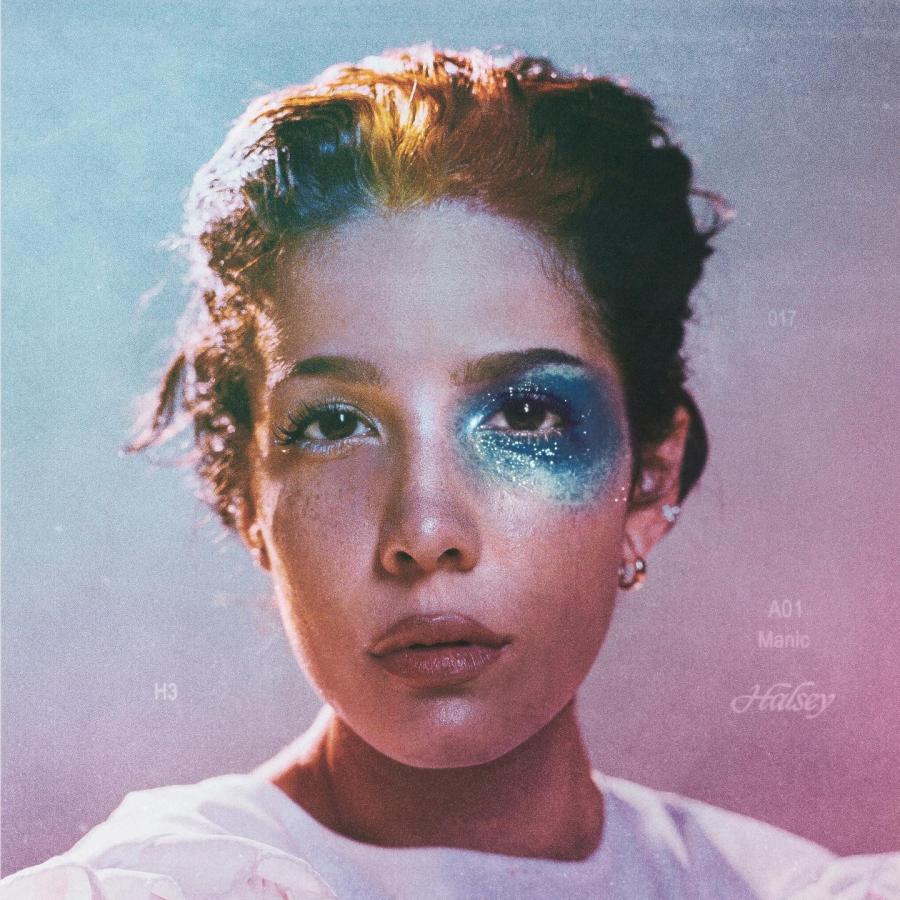
Figure 1: Halsey's Manic album cover
Halsey’s Manic: an analysis of the I in Ashley and 929
For this article, two songs from Halsey’s Manic will be analyzed. Ashley is the first track on the sixteen-track album, while 929 is the last one. Both were not released before the release of the full album.
Ashley: an introduction to the person behind the pseudonym
The first track of Manic is self-titled, as Ashley is Halsey’s birth name. The track, according to Halsey in her interview with Zane Lowe, is ‘an introduction, in a way that says, here’s this album that I’m giving you, that I had to cut myself open to make’ (Halsey, 2020c, 7:54).
In the song, Halsey paints a picture of an artist who is struggling to figure out who they really are. ‘Standing now, in the mirror that I built myself’ she sings, stating that the way the I is seeing herself is partly due to her own expectations and her own design. ‘And I can’t remember why, the decision wasn’t mine,’ she states then. According to Meizoz (2010) ‘posture is not uniquely an author’s own construction, but an interactive process: the image is co-constructed by the author and various mediators’ (Meizoz, 2010, p. 84): Halsey acknowledges in these lyrics that the creation of her persona was partly decided by others, and this may refer to both societal and industrial pressures. ‘But it seems I’m only clingin’ to an idea now’ she follows finally, acknowledging the fact that she feels like she cannot fully grasp who she is anymore: she is holding on to a mere idea of who she has to be.
Halsey acknowledges in the lyrics that the creation of her persona was partly decided by others
In the second verse, Halsey states that she is ‘so committed to an old ghost town’. This ghost-town can be related to Halsey’s concept-album Badlands, which was about a post-apocalyptic American town. With this lyric, Halsey states that she still is very committed to the person she appeared to be when she wrote that album. Then, she asks herself a crucial question: ‘Is it really that strange if I always wanna change?’. The I wonders if her constant need to become someone else is strange. The track ends with ‘It’s getting harder every day somehow, I’m burstin’ out of myself’. The I is telling the listener that she cannot pretend anymore, and is preparing them for her true self that is about to be revealed over the next tracks.
In the song, Halsey paints the picture of an I that is unsure of who to be. She highlights the pressure that fame brings and that the I feels like they constantly want to be somebody else. This I is insecure and unsure, but ultimately tells the listener that they cannot pretend anymore: the track is a way for the I to say that they are ready to reveal their ‘real’ self.
929: a rambling, ranting summary of the I
929 is reminiscent of a long, rambling rant. Halsey speaks to a steady beat melodically. She is not really singing, but not really talking either: the track almost feels like a spoken word performance with a backing track.
The track begins with a recording of a conversation between Halsey and an unnamed man, in which she explains the title of the song: ‘I really was born at 9:29 AM on 9/29. You think I’m lying, but I’m being dead serious’. Then the stream of words sets off. The singer starts by asking herself ‘Well, who am I?’, and then sums up the facts that make her who she is: ‘I’m almost 25’, she says for example, and then mentions that she spent half of her life ‘in a cheap apartment’ and the other half ‘on the Eastside’.
She continues by summing up her career, her experiences with other artists, and how seeing herself on a screen feels weird. The insecurity of the I regarding her fame is emphasized on this track, with Halsey asking: ‘Who do you call when it’s late at night? When the headlines just don’t paint the picture right? When you look at yourself on a screen and say: Oh my God, there’s no way that’s me’. While the I acknowledges her artistic success in the track, she also emphasizes how she does not feel like she is of value. When remembering that a fan told her ‘Ashley, you ‘gotta promise to us that you won’t die, ‘cause we need you,’ Halsey herself continues: ‘And honestly, I think that she lied’. ‘I’ve got a long way to go until self-preservation, I’m still looking for my salvation’ Halsey states just before the interlude of the song, once again emphasizing the insecurity that her way of life provides her, her anxiety, and the feeling of needing to be saved.
In the interlude of the song, Halsey takes the listener back to the conversation that the track commenced with: ‘I think I have a confession to make,’ she says, confiding in the listener. ‘I feel like I need to say that I was really born at 9:26. It’s on my birth certificate. I’m a liar, man, I’m a fucking liar’ she finally reveals.
Manic thus concludes with a rambling stream of words that are supposed to feel confessional to the listener: Halsey is laying herself bare, all secrets are revealed, this is who she really is. Within the track, the I reveals both biological facts that make up who she is, as well as her inner-most feelings of insecurity, inferiority, and doubt.
The I in Manic: the construction of the ‘real’ person
Ultimately, we can see that the I that is constructed within these two songs is doubtful: they do not know who they want to be, feel like they need to be someone they’re not, and are unsure of who they will become if they release these expectations. The I is insecure about their importance in other people’s lives, unsure of their fame and whether it is deserved, and feels generally conflicted in life. There is a sense of catharsis within the lyrics of Manic, however: while the album commences with someone who does not know who they are and is afraid they might lose all sense of identity, the album ends in a confessional stream of words in which the I lets go of all expectations and just rambles about themselves. This can be regarded as the first step to accepting who they really are.
Halsey in public appearances: a multiplicity of roles
The three public appearances used as a case study for this article consist of YouTube videos posted six months before and six months after the release of Manic. I will discuss the Apple Music Interview with Halsey by Zane Lowe (Halsey, 2020c), the iHeartRadioCA interview with Halsey (iHeartRadioCA, 2019), and Halsey’s Artist Spotlight Stories (Halsey, 2020d) respectively.
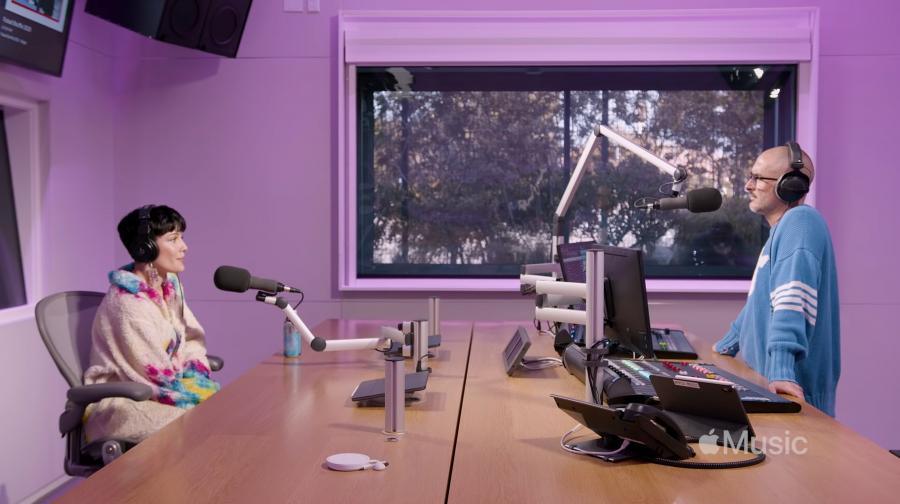
Figure 2: A screenshot of Halsey's Apple Music Interview
Halsey and Zane Lowe: An in-depth conversation about Manic
In Zane Lowe’s Apple Music interview (Halsey, 2020c), Halsey and the interviewer are on opposite sides of a table in a studio while both wearing headphones. Halsey is sitting on a comfortable chair, while Zane has chosen to stand up for the hour-long in-depth talk about Halsey’s then newly released album, the conversation unfolding song-by-song.
The interview is casual and friendly: Halsey and Zane have done previous Apple Music Interviews together and seem to be friends. Furthermore, the casual, and even cozy, atmosphere of the interview is highlighted by Halsey’s appearance. She is wearing a fluffy, comfortable sweater with colors that correspond to the ones used in Manic’s album art. Her hair is short and dark, and her make-up seems to be very neutral: it almost looks like she is just sitting at home while talking to a friend.
In this interview, it is apparent that Halsey is portraying herself in a casual manner. Furthermore, she is confident in her way of speaking: she rarely hesitates when saying something and is firm and precise in her wording. She laughs, when calling herself arrogant for example (Halsey, 2020c, 31:15), which adds to the casual and friendly manner of the conversation.
While the interview revolves around the album Manic, the interview is not merely introspective. Halsey talks about her colleagues in the industry, complimenting K-Pop artists such as Suga and producers like Lido and explaining what important role they play in modern-day music.
Within her conversation with Zane, Halsey contemplates her artistic persona several times. She firstly mentions that she feels like the persona of Halsey used to be very constructed, stating that the album Manic is ‘a reconnaissance of years of things I never got to work through because I was nineteen and I was Halsey (…) I had to be composed. And I got too composed. That was part of the problem’ (Halsey, 2020c, 14:08-14:30]. The album, according to Halsey, was a way for her to reconnect with the artist she wanted to be.
The album was a way for her to reconnect with the artist she wanted to be
Halsey emphasizes that she does know who she is, which is in contrast with the insecurity that is the focal point on Manic: she is very calculated, has thought very well about what she wants to portray and how she wants to do that. This is shown in the way she carries herself, but also in what she says: ‘This is the point where I’m hoping people are gonna be like, Oh, OK, this is what she does: every time she puts out a record it’s whole different thing, it’s a whole different sound"’ (Halsey, 2020c, 11:18-11:30), she mentions; the Halsey in this conversation knows who she is, knows what she wants, and exudes confidence.
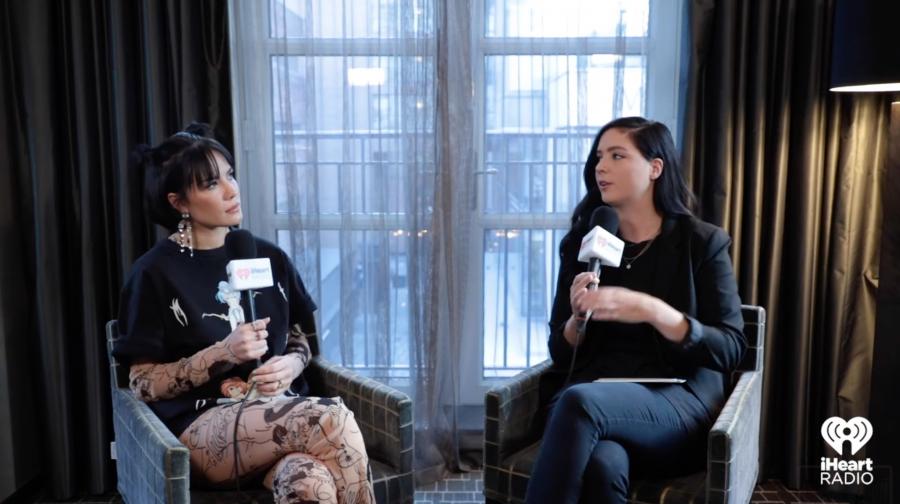
Figure 3: A screenshot of Halsey's iHeartRadioCA Interview
iHeartRadioCA: Halsey as a confident but humble activist
In Halsey’s interview with Canada’s iHeartRadio Channel (iHeartRadioCA, 2019), interviewer Shannon has a fun, lighthearted conversation with the singer. The interview takes place in what seems to be a hotel room with two big, comfortable chairs in front of a window.
In contrast with her interview with Zane Lowe, in which Halsey was seen wearing a very comfortable outfit, her presence in the iHeartRadio interview can be considered more extravagant. Her hair is in a funky style, she has a fringe and two small buns on her head, and while her make-up is just as minimal as it was in the Apple Radio interview, her outfit is comprised of a big graphic t-shirt and a matching set of a long-sleeve shirt and neutral-colored pants with a cartoon-like pencil drawing.
During the conversation, Halsey’s attitude is laid-back, calm, and confident. She speaks at a slow pace most of the interview, slightly leans back in her chair, and is continuously chewing gum in-between questions. Most of the answers to the questions being asked seem to be pre-prepared: Halsey speaks in long, clear sentences without any hesitation or stumbling over words.
The conversation topics of the interview range from considering Halsey’s songs, such as the story behind her newly-released Graveyard, to Halsey’s life as a celebrity on tour and her opinion on several social issues. This allows the singer to position herself within a social field as well: ‘I think I’ve always been pretty outspoken about things,’ (iHeartRadioCA, 2019, 0:58-1:00) she mentions before sharing a story about being cat-called on the red carpet and explaining how being bipolar has influenced her life. While Halsey does not explicitly mention that she is an activist, she does say that she is vocal about social issues.
During the interview, Halsey acts very casual about her accomplishments. When the interviewer asks about a certain lyric that she found very inspiring, Halsey brushes off the compliment by telling her that she can’t take credit for that line, as her mom came up with it (iHeartRadioCA, 2019, 7:00-7:05). This casual attitude towards her accomplishments is reoccurring: when the interviewer mentions that Halsey has a big tour coming up, for example, Halsey again is very casual, saying that ‘touring for me at this point is kinda just like… touring to me is more normal than not touring’ (iHeartRadioCA, 2019, 8:33-8:38).
In sum, in the iHeartRadioCA interview, Halsey seems to construct an image of a successful and cool celebrity that has accomplished much, but simultaneously is very down-to-earth and laid back. Furthermore, Halsey highlights that she is an advocate for speaking out about social injustice, portraying herself as someone who is involved with social issues as well. The focus in this interview lies mostly on Halsey’s celebrity status, as her accomplishments and personal life are highlighted.
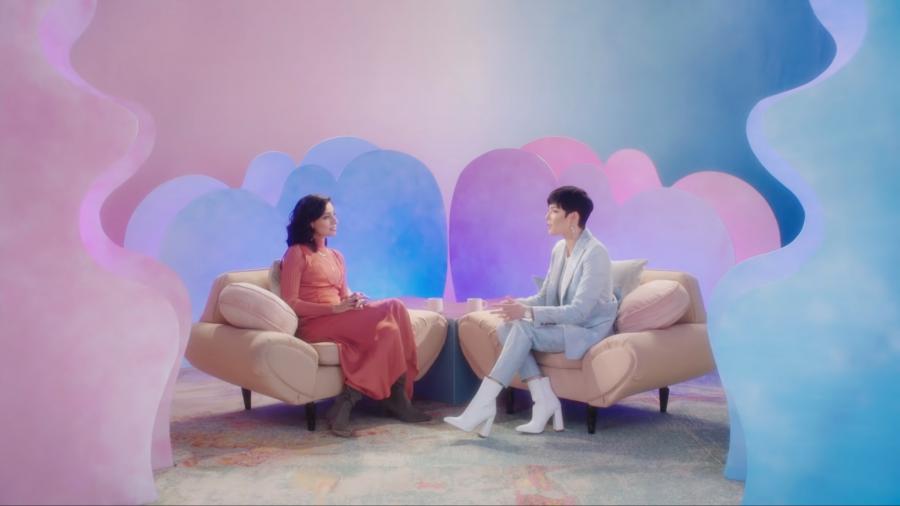
Figure 4: A screenshot of Halsey's A Conversation About Bipolar Disorder
Halsey as an intellectual celebrity: a conversation with a therapist
In Halsey’s A Conversation About Bipolar Disorder (Halsey, 2020d), Halsey and therapist Dr. Snehi Kapur talk about mental health and specifically bipolar disorder, which the artist suffers from. The video was released four months after the release of Manic and was designed as a way to give viewers a broader insight into mental health issues.
While the video is subtitled ‘a conversation with Halsey’, in the video Halsey acts as both the artist who explains her reasoning behind her album, and as a moderator, as she asks licensed therapist Dr. Snehi Kapur several questions regarding mental health. The two women are sitting on soft, big chairs, reminiscent of chairs you might see in a psychiatrist’s office in movies, and are surrounded by a decor of pastel-colored clouds, fitting into the color scheme of the album.
In this public appearance, Halsey seems to portray a more serious, authoritative role by moderating the conversation and talking about social issues explicitly. She is wearing a baby blue suit-jacket with matching trousers, adding to the serious role that she is performing. Her hair is styled in a short pixie cut and her make-up is neutral.
While most theorists would not truly consider Halsey a public intellectual, in this instance Halsey is taking a step back from being an artist and takes a more intellectual and educational stance on the topic at hand. Halsey might not be a ‘celebrity intellectual’ per se, as the trope examines the status of a person who has academic credentials as well as performs in a celebrity zone (Heynders, 2016, p. 14-15), but I propose she could be considered an intellectual celebrity in this instance as she is stepping back from her role as an artist and steps into the role of educator and facilitator.
Furthermore, since Halsey herself lacks the resources to provide her audience with the information she would like to provide them with, she takes on the role of moderator or facilitator. This is often done by public intellectuals when speaking about issues beyond their own specific knowledge. As Baert and Booth mention, when paraphrasing Osborne (2006): ‘In situations where intellectuals feel a duty to comment on issues beyond their area of expertise, they might choose to adopt the role of facilitator or mediator rather than that of legislator’ (Baert & Booth, 2012, p. 120-121). This can be done by ‘establishing and steering a debate through questions and posting links to alternative sources of information’ (Baert & Booth, 2012, p. 120-121). In this video, Halsey provides her audience with resources and offers them insight into the complexity of mental health, performing the role of both an experienced expert, educator, and mediator. While she cannot be truly considered an intellectual as her credentials are not academic, she is creating awareness and giving information on issues that she deems important in an intellectual manner.
Halsey as consistently inconsistent
All in all, we see that the way the I is constructed in the lyrics of Halsey’s songs is different from the way she portrays herself in public appearances. Manic is marketed as an introspection: a look into the ‘real’ person behind Halsey. Regarding this work as such would however ignore the fact that creating an album is a process that asks for very careful and precise construction. It is no coincidence that Manic commences with a very general pop sound and introduces us to Ashley, while 929 is a rambling confession in which the singer confides in the listener: this development from introduction to confession is a way of making the listener feel like they have come closer to the ‘real’ person behind the artist. The I in Manic, while posing to be real and true, is as much constructed as any other portrayal of Halsey.
The textual self-image that Halsey offers the listener, the persona that is performed within the lyrics of the album, is one filled with insecurity and doubt. Within her non-verbal behaviour, however, in the interviews analyzed, Halsey generally portrays herself as confident, knowledgeable, and certain: she is firm with her way of speaking, does not hesitate when talking, and performs the roles of social justice activist and educator. It is however important to note that two of the three public appearances analyzed in this article have been published on Halsey’s own social channels: with this we can assume that she has had a say in what was published, thus making it another form of self-narrating her appearance. However, Halsey’s public performances on other non-self-owned platforms are similar to her performances on her self-regulated channels, as seen with her interview on the iHeartRadioCA channel.
The I in Manic, while posing to be real and true, is as much constructed as any other portrayal of Halsey
Moreover, in these three public portrayals, Halsey is performing distinctly different roles, ranging from the artist talking about her artistic work to the celebrity talking about her life, achievements, and celebrity culture, and an intellectualized or educational artist that provides her audience with resources and information on important societal problems and phenomena.
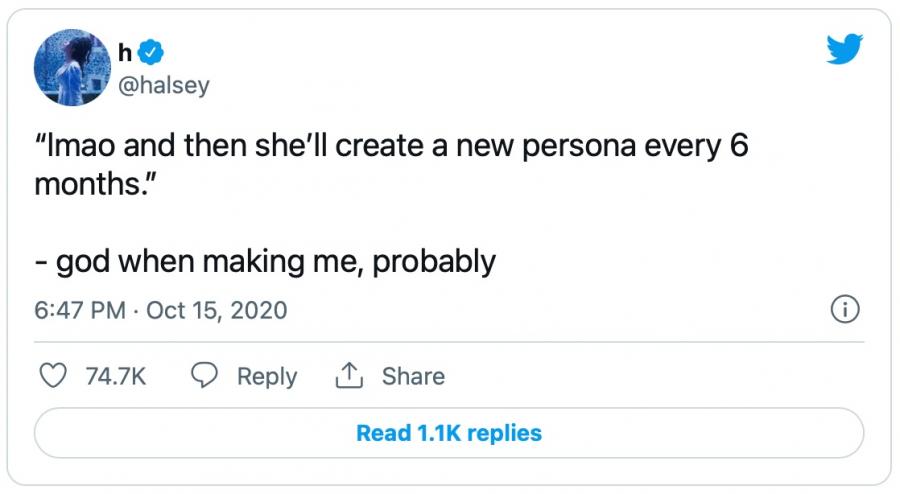
Figure 5: A screenshot of a tweet by Halsey on October 15th 2020
Ultimately, it is no wonder that the I in Ashley asks herself if it is really that strange if she always wants to change. Within both her behaviour and within the discourse she provides us with, Halsey is constantly negotiating her image: she is constructing different versions of herself, not only throughout her artistic discography but from the way she presents herself physically in interviews to the roles she performs. Halsey’s persona is that of an ever-changing artist that in one interview can talk about her music in-depth, in the other operates as a mediator that facilitates her audience with information on social issues, and in her lyrics is insecure and unsure of who she really is. The artist is not only aware of the fact that she is constantly negotiating her image, as she emphasizes her ever-changing nature in her tweet in figure 5, Halsey explicitly has stated that her goal is to constantly change and reinvent herself, for example in her interview with Zane Lowe.
Even though at first glance Halsey’s self-presentations can seem inconsistent, Halsey’s persona is deliberate and convincing. As demonstrated in this analysis, the essence of Halsey’s persona is the fact that the way she presents herself is constantly morphing, shifting, and changing. By performing a multiplicity of roles and presenting herself differently every time, Halsey is consistently inconsistent, and that is precisely what she set out to do.
References
Baert, P., & Booth, J. (2012). Tensions Within the Public Intellectual: Political Interventions from Dreyfus to the New Social Media. International Journal of Politics, Culture, and Society, 25(4), 111–126. https://doi.org/10.1007/s10767-012-9123-6
h [@halsey]. (2019, September 12). http://manicthealbum.com 1:17PM PST. [Tweet].
Halsey. (2019). Halsey - Graveyard Out 9/13 [YouTube Livestream].
Halsey. (2020a, January 17). 929 [Streamed]. Capitol Records.
Halsey. (2020b, January 17). Ashley [Streamed]. Capitol Records.
Halsey. (2020c). “Manic” Apple Music Interview with Zane Lowe [YouTube Video].
Halsey. (2020d). A Conversation About Bipolar Disorder (Artist Spotlight Stories) [YouTube Fundraiser Video].
Havens, L. (2017, September 5). Halsey, Logic, Michael Angelakos & More To Participate in Mental Health Awareness & Suicide Prevention Campaign “I’m Listening.” Billboard.
Heynders, O. (2016). Writers as Public Intellectuals: Literature, Celebrity, Democracy. Palgrave Macmillan.
Iasimone, A. (2018, January 20). Halsey Delivers Emotional Speech About Sexual Abuse, Rape at New York Women’s March: Here Is Her Full Poem. Billboard.
iHeartRadioCA. (2019). What is the story behind Halsey’s Graveyard? | Interview [YouTube Video].
McNamara, B. (2017, January 9). Halsey Opened Up About Undergoing Multiple Surgeries and Her Endometriosis. Teen Vogue.
Meizoz, J. (2010). Modern Posterities of Posture. Jean-Jacques Rousseau. In G. Dorleijn, R. Grüttemeier, & L. Korthals Altes (Eds.), Authorship Revisited. Conceptions of Authorship Around 1900 and 2000 (pp. 81–93), Peeters, Leuven.
Prance, S. (2020, June 1). Halsey slams police for firing rubber bullets at her and other Black Lives Matter protesters. PopBuzz.